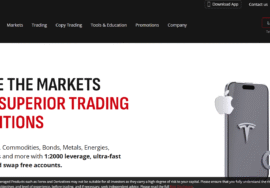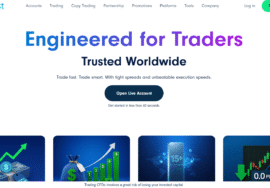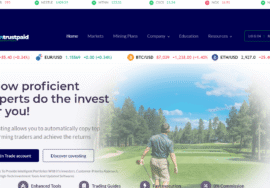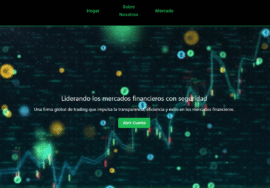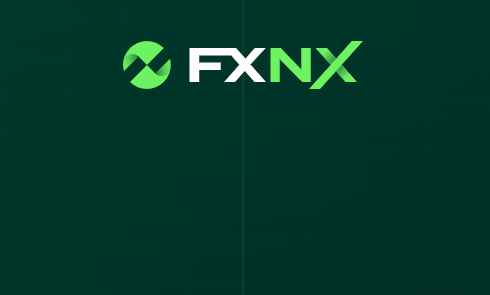
7 Key Red Flags That FXNX.com Is High-Risk
7 Key Red Flags That FXNX.com Is High-Risk
1. Hidden Ownership & Masked WHOIS Records
Scamadviser reports that FXNX.com has its domain owner hidden behind WHOIS privacy protection, registered via a service “Withheld for Privacy ehf.” hat lack of transparency is a classic sign of potential fraud. If you don’t know who really runs the site, it’s very difficult to pursue accountability or refunds.
2. Low Trust Score Across Independent Reviewers
Multiple evaluation sites deliver cautionary scores for FXNX. Scam Detector gives a trust index of 38.4/100, branded as “questionable, controversial, flagged.” Scamminder echoes concerns around vague promises, unclear regulation, and aggressive marketing. When multiple sources flag the same issues, it’s not coincidence—it’s a pattern.
3. Unclear Regulation & Oversight
FXNX lacks credible, verifiable regulation. Reviewers note that there is no clear authority publicly overseeing its operations—no FCA, ASIC, or equivalent licensing. A trading platform without regulatory oversight means no consumer protections, no fallback if things go wrong, and increased risk of misuse of client funds.
4. No Transparency on Payment & Withdrawal Details
ForexBrokerZ and FairForexReviews find that FXNX does not properly disclose which payment methods (bank transfers, wire, crypto, etc.) are accepted, nor how withdrawals work—what fees apply, what minimums or maximums, and how long processing takes. This kind of opacity often leads to surprising costs like bank reclaim fee or wire transfer reclaim demands after the fact.
5. Marketing Promises That Sound Too Good to Be True
FXNX advertises “zero spreads,” “premium accounts,” “AI-powered insights,” “rewards programs. These features can attract investors, but without backing data, audits, or proof of execution, they become red flags. Unrealistic profit projections are a major component of many scams.
6. User Complaints of Withdrawal Delays & Fee Surprises
Some victims allege that once profit thresholds are reached, attempts to withdraw are blocked or delayed. They are then asked to pay additional fees—sometimes called “processing fees” or “bank reclaim fee”—before funds will be released. These practices align with many crypto fraud operations that profit from keeping funds locked or requiring extra payments.
7. Scored as Risky & Questionable by Brokerage Forums & Risk Trackers
Sites like FxGecko warn users that while FXNX is active in forex rankings, it carries risk alerts. It lacks strong verification and ranks low in terms of credible exposure and reputation. When a broker is frequently flagged by community trust indicators, it should raise immediate caution.
Practical Steps If You’ve Dealt with FXNX
- Demand clarity on which fees will apply for withdrawals upfront (wire, bank, crypto).
- Never send money to “recovery” agents or third parties claiming they’ll fix a withdrawal if you pay a bank reclaim fee.
- Document all communications — screenshots, emails, invoice requests.
- Reach out to your bank or payment provider about “unauthorized transactions” or “blocked funds.”
- Report to local regulators and consumer protection agencies.
Conclusion : Why FXNX.com Seems Too Risky
FXNX.com shows enough red flags that anyone considering investing should treat it as high-risk. Small details converge into a wider pattern.
Firstly, hidden ownership via private WHOIS and the lack of credible identity details suggest the operators are avoiding legal exposure. For many scam platforms, masking ownership is deliberate—making it harder to trace or hold them accountable. Transparency isn’t optional—it’s essential.
Secondly, low trust scores from multiple evaluation platforms are not just warnings; they’re signals that the site is being scrutinized for consistent problems. Sites like Scam Detector, Scamadviser, and Scamminder use data from user feedback, regulatory check-ups, domain history, and complaint logs. When all three raise alarms about the same site, it’s unlikely to be mistaken suspicion—it tends to reflect recurring problematic behavior.
Lack of regulation compounds the danger. Platforms operating without oversight aren’t bound by law to protect deposits, handle disputes fairly, segregate funds, or follow audited practices. If a site isn’t listed on FCA, ASIC, CySEC or other reputable registers, that means investors might have no legal grounds to recover funds if they hit a wall trying to withdraw.
Third, the opacity surrounding deposits, withdrawals, fees, and methods is very concerning. Without knowledge of how funds move, you can’t anticipate or avoid excessive costs. When users report unexpected fees—like demands for wire transfer reclaim fees or bank reclaim fees—they often feel blindsided. Legit brokers typically publish fee schedules and are upfront if certain payment methods have extra costs.
The marketing pitch of “zero spreads,” “premium accounts,” or “AI tools” can be tempting—and sometimes such features exist. But for FXNX, those claims are not matched by data or verified reviews. Marketing language alone doesn’t equal credibility—it can be a user-acquisition tactic used by many scam operations.
Looking at the user complaints, the recurring theme is: invest, see some small “proof” of profits, try to withdraw, then get stuck. Then requests for additional fees (processing, wire, reclaim) appear. That’s textbook for scams that keep earnings locked behind hurdles, or worse, never allow full withdrawal. The jump from “I invested” to “Can I get my money out?” is often where the unseen danger lies.
In short, FXNX.com seems to carry several of the “classic” traits of scam or high-risk forex/crypto platforms: hidden ownership, unverified regulation, vague or missing financial disclosures, surprise fees, user withdrawal issues, and aggressive onboarding. These are enough reasons to approach with extreme caution—if at all.
If you haven’t yet used FXNX, best practice is to stay away. If you have, put protections in place: gather proof, contact your bank/payment provider, report to regulators, and avoid any “recovery” agents who demand payment to get your funds back. It’s painful to lose money—but even worse to keep sending more under false promises.


